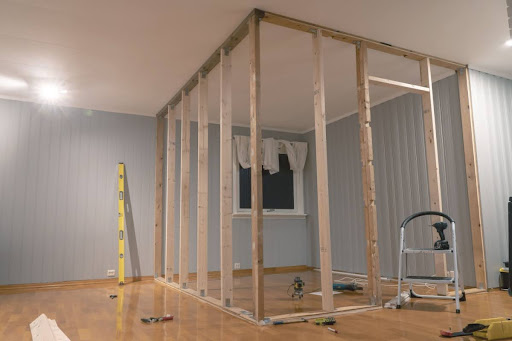Adding new space to your home can revolutionize how you live in it. That extra bedroom, expanded kitchen, or brand-new home office gives you room to breathe and lets you customize your house to fit your lifestyle perfectly. Home additions boost your property value while making daily life more comfortable and convenient.
But here’s what many homeowners don’t realize until they’re knee-deep in construction: every addition needs proper electrical work. Your existing electrical system wasn’t designed to handle that extra space and all the appliances, lights, and devices you’ll put in it. Thoughtful electrical planning now saves you headaches (and money) later.
Assessing Your Current Electrical System
Before you start any addition project, you need to take a good look at your existing electrical setup. Many older homes run on 100-amp service panels that simply won’t support additional electrical demands.
Your first step? Check your electrical panel’s amperage rating. This tells you how much total electricity your home can handle. Most modern homes need at least 200 amps, especially with additions.
You’ll also want to examine:
- How many circuits you currently have
- Which circuits are close to capacity
- The age and condition of your existing wiring
- Any previous electrical modifications or upgrades
This assessment helps you figure out if you need a panel upgrade or if your current system can handle the addition with some modifications. Older homes often need complete panel replacements before adding significant square footage.
Calculating Load Requirements for Your Addition
Every addition has its own unique electrical needs. A home office might need extra outlets for computers and equipment, while a kitchen addition requires high-capacity circuits for appliances.
For perspective, a typical bedroom might need 3-4 outlets and 1,500 watts for a lighting fixture, while a kitchen addition could require 5,000-10,000 watts for appliances, lighting, and outlets. This calculation helps determine how many new circuits you’ll need and whether your existing panel can support them. Remember that bathrooms and kitchens have special requirements for GFCI protection and dedicated circuits.
Planning Outlet and Switch Placements
Think about how you’ll use each space in your addition. There’s nothing more frustrating than finishing a beautiful room only to realize you don’t have enough outlets or they’re in awkward spots.
For optimal outlet placement:
- Place outlets every 6-8 feet along walls.
- Add extra outlets where you plan to use multiple devices.
- Think about furniture placement — outlets behind heavy furniture become unusable.
- Consider USB outlets in areas where you’ll charge devices.
Switch placement matters, too. Plan light switches at room entrances, preferably on the side where the door opens. For large rooms, consider three-way switches that let you control lighting from multiple entry points.
Smart planning here makes your addition more functional and helps you avoid running extension cords across rooms later.
Important Electrical Upgrades to Consider
Electrical Panel Upgrade
Your electrical panel is the heart of your home’s electrical system. If you’re adding substantial square footage, upgrading from 100 to 200 amps gives you room to grow.
Dedicated Circuits
Certain appliances need their own circuits to operate safely:
- Refrigerators
- Microwaves
- Washing machines
- Air conditioners
- Furnaces
- Electric water heaters
GFCI and AFCI Protection
Modern electrical code requires special protective outlets in areas with water exposure, like bathrooms and kitchens, and living spaces. These safety features prevent shocks and electrical fires and bring your home up to current code standards.
Smart Home Wiring
While planning your addition, consider future-proofing with smart home wiring. This might include:
- Ethernet cables for reliable internet
- Speaker wiring for whole-home audio
- Extra conduits for future technology
Taking these steps during construction costs much less than retrofitting later.
Navigating Permits and Code Requirements
Electrical work requires permits in most municipalities. These aren’t just bureaucratic hassles — they protect you by making sure work meets safety standards.
Local building codes dictate:
- Minimum number of outlets per room
- Circuit requirements for specific areas
- Proper grounding techniques
- Appropriate wire sizing
Working without permits can lead to complications when selling your home and might invalidate insurance claims if electrical problems arise. Professional electricians handle permit applications and inspections as part of their service.
Make sure any electrical work complies with the National Electrical Code (NEC) plus any local amendments. These standards change every few years, so even if your existing home met code when built, your addition must meet current requirements.
Choosing the Right Electrical Contractor
The right electrician makes all the difference in your home addition project. You need someone who communicates clearly, works efficiently, and holds proper licenses and insurance. Good electricians explain your options without pushing unnecessary upgrades. They work well with your general contractor and stick to timelines. Remember that the lowest bid isn’t always your best choice. Quality electrical work prevents future problems and keeps your family safe.
Ready to Power Up Your Home Addition?
Grasser Electric looks forward to wiring your home additions! We’re located in St. Peters and proudly serve the Greater St. Louis area, providing wiring for new constructions and remodels, and so much more! Call us today and experience the true power of your home!

